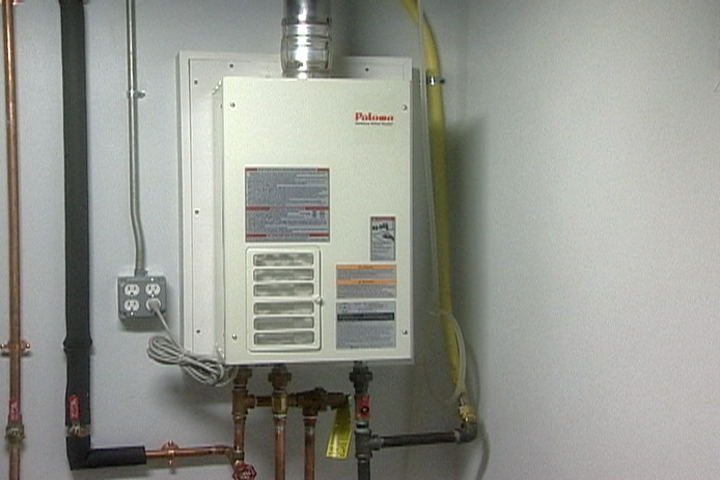How do you really feel when it comes to How to Maintain a Hot Water Heater in a Few Simple Steps?
Warm water is essential for daily comfort, whether it's for a revitalizing shower or cleaning dishes. To ensure your warm water system runs successfully and lasts longer, routine upkeep is vital. This article offers functional pointers and insights on how to preserve your home's warm water system to stay clear of disruptions and expensive repair work.
Intro
Keeping your home's warm water system could seem challenging, however with a couple of straightforward actions, you can guarantee it runs smoothly for years to find. This overview covers every little thing from recognizing your warm water system to do it yourself upkeep tips and knowing when to hire expert assistance.
Significance of Preserving Your Warm Water System
Normal upkeep not just extends the lifespan of your hot water system but also guarantees it runs successfully. Disregarding upkeep can bring about lowered performance, greater power costs, and even premature failure of the system.
Signs Your Hot Water System Needs Maintenance
Knowing when your hot water system needs attention can prevent significant concerns. Keep an eye out for indicators such as irregular water temperature level, odd sounds from the heating unit, or rustic water.
Flushing the Water Heater
Flushing your hot water heater gets rid of debris accumulation, improving efficiency and lengthening its life.
Monitoring and Changing Anode Rods
Anode rods avoid corrosion inside the tank. Evaluating and changing them when worn is essential.
Complex Concerns Calling For Expert Assistance
Examples consist of significant leaks, electrical troubles, or if your hot water heater is constantly underperforming.
Routine Professional Upkeep Perks
Expert maintenance can consist of complete assessments, tune-ups, and guaranteeing compliance with safety and security requirements.
Examining and Readjusting Temperature Level Settings
Adjusting the temperature level settings ensures optimum performance and safety.
Do It Yourself Tips for Maintenance
You can execute a number of maintenance jobs yourself to keep your warm water system in top problem.
Checking for Leaks
Consistently examine pipes and links for leaks, as these can bring about water damage and greater expenses.
Understanding Your Warm Water System
Before diving right into maintenance jobs, it's valuable to understand the basic parts of your hot water system. Commonly, this includes the hot water heater itself, pipes, anode poles, and temperature controls.
Month-to-month Maintenance Tasks
Regular monthly checks can help capture small problems before they intensify.
Evaluating Pressure Relief Valves
Testing the stress safety valve ensures it functions correctly and prevents too much stress buildup.
Protecting Pipes
Insulating warm water pipes lowers warmth loss and can conserve energy.
When to Call a Professional
While do it yourself maintenance is valuable, some issues need expert expertise.
Conclusion
Normal maintenance of your home's hot water system is vital for effectiveness, durability, and expense financial savings. By complying with these pointers and recognizing when to seek specialist aid, you can ensure a trusted supply of warm water without unanticipated disturbances.
How to Maintain an Instant Hot Water Heater
Before tinkering with your hot water heater, make sure that it’s not powered on. You also have to turn off the main circuit breaker and shut off the main gas line to prevent accidents. Also turn off the water valves connected to your unit to prevent water from flowing into and out of the appliance. 2. When you’re done, you have to detach the purge valves’ caps. These look like the letter “T” and are situated on either side of the water valves. Doing so will release any pressure that has accumulated inside the valves while at the same time avoid hot water from shooting out and burning your skin. 3. When the purge valves’ caps are removed, you have to connect your hosing lines to the valves. Your unit should have come with three hoses but if it didn’t, you can purchase these things from any hardware or home repair shops. You can also get them from retail stores that sell water heating systems. Read the user’s manual and follow it to complete this task properly. When the hosing lines are connected, open the purge port’s valves. 4. You should never use harsh chemical cleaners or solutions when cleaning your unit. Make use of white vinegar instead. It should be undiluted and you’ll probably use about 2 gallons. 5. Now flush your water heater. This task should probably take about 40 minutes. We can’t give you specific directions for this because the procedure is carried out depending on the type, model and brand of your heater. With that being said, refer to the user’s manual. 6. When you’re done draining the unit, you have to turn off the purge port valves again. Remove the hosing lines that you earlier installed on each of the water valves. Put the valve caps (purge port) back in their respective places and be very careful so as not to damage the rubber discs that are found inside these caps. 7. Now that everything’s back in place, check your user’s manual again to find out how to reactivate your water heating system. 8. Once it is working, turn one of your hot water faucets on just to let air pass through the heater’s water supply pipes. Leave the tap on until water flows smoothly out of it. https://www.orrplumbing.com/blog/2014/september/how-to-maintain-an-instant-hot-water-heater/

I'm very involved in How to Maintain Your Water Heater & Prolong its Life and I'm hoping you appreciated my blog post. Do you know somebody else who is excited by Tips on Maintaining a Water Heater? Be sure share it. I take joy in your readership.
Explore